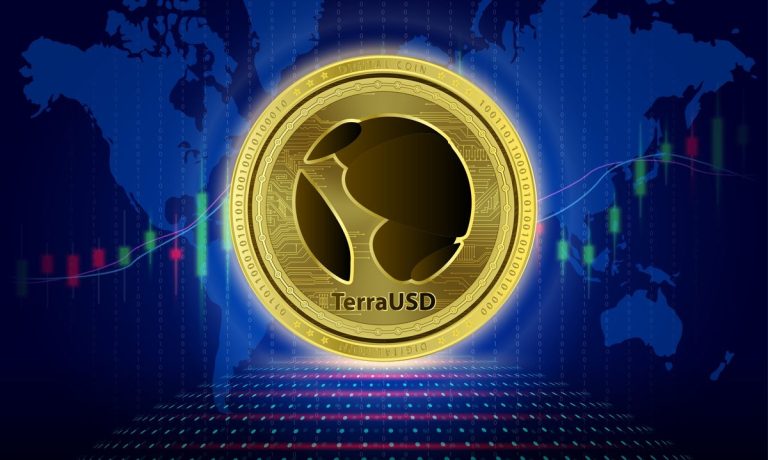Blockchain Series: What Is TerraUSD? The No. 3 Stablecoin Doesn’t Have a Single Dollar Behind It

UPDATE: In the second week of May 2022, the TerraUSD stablecoin “broke the buck,” falling below a $1 peg. Within a week, a run caused by a loss of confidence that it could redeem all UST tokens left it and its arbitrage partner token LUNA virtually valueless. Between UST’s $18 million market capitalization and LUNA’s $30 billion, the total loss to investors was about $48 billion.
This collapse drastically reshaped the stablecoin debate, adding political pressure to regulate them even before other cryptocurrencies and reinforcing regulators’ and elected officials’ belief that only stablecoins backed one-to-one by reserves of fiat currency and highly-liquid assets like short-term Treasury notes should be permitted.
See more: $45B Stablecoin Rout Confirms Worst Fears about Crypto’s Need for Reserves
Read also: Reports: House Committee Close to Vote on ‘Payments Stablecoin’ Bill
Even if you’ve been following the debate over stablecoins, the dollar-pegged digital assets that have become the bogeyman of crypto, you’ve likely not heard of TerraUSD.
There are a number of reasons for that, but the most notable is that if you go back six months, no one else outside of the core cryptocurrency industry had heard of it either.
In November, the stablecoin known as UST had a market capitalization of $2.9 billion.
Today it’s $17.9 billion, making it the third-largest stablecoin, behind Tether’s USDT ($83 billion) and Circle’s USD Coin, or USDC ($49.9 billion).
See also: The Case for Stablecoins: A Better, Safer, More Innovative Payments Solution Than Bitcoin
That’s a growth curve that would put it squarely in the crosshairs of the regulators, financial watchdog organizations and politicians who believe stablecoins will cause financial mayhem if they are allowed to become a serious payments rail without any other cause.
But TerraUSD has another target on its back: It is an algorithmic stablecoin, with a dollar peg backed not by a one-to-one cache of fiat currency and highly liquid investments like short-term Treasury Notes.
Instead, it is backed by capitalism, or more specifically, by arbitrage.
Arbitraged Stability
Algorithmic stablecoins work because they are linked to a governance token, a separate, free-floating cryptocurrency that gives the holder a vote in the decentralized autonomous organization, or DAO, that governs both itself and the stablecoin.
Also read: PYMNTS DeFi Series: Unpacking DeFi and DAO
TerraUSD works in tandem with a cryptocurrency called, confusingly, Terra, so we’ll refer to it hereafter by its exchange symbol, LUNA.
To buy the TerraUSD stablecoin, you have to mint new tokens, and to do that, you have to buy LUNA. The minting process burns — destroys — those LUNA tokens. That, Adam Smith tells us, should reduce the supply and thus increase the price. You then have dollar-pegged stablecoins that can be used as a currency for any type of transaction.
It works the same in the other direction: to mint LUNA, you have to burn TerraUSD. That increases the supply of LUNA, which should in turn decrease the price.
The way the stable part of the stablecoin works is that arbitrageurs buy and sell large amounts of tokens when small price discrepancies in the dollar peg appear. So, they’ll sell LUNA when the stablecoin falls slightly below $1 and buy it if the price rises above $1, using volume to make profits on tiny margins.
Shoot the Moon
What differentiates TerraUSD from the first major algorithmic stablecoin, MakerDAO’s DAI, is the market cap of their respective governance tokens.
DAI has a market cap of about $9 billion, but it’s Maker (MKR) token has one of $1.7 billion, making it the No. 60 cryptocurrency.
LUNA, however, has a marketcap of $32.9 billion, making it the eighth-largest cryptocurrency. It just passed another fiat-backed stablecoin, Binance’s BUSD, with a $17.3 billion market cap.
Top 10 cryptos tend to be volatile, and they also tend to attract a lot of buyers without the understanding of the cryptocurrency market that smaller tokens attract — say those down at No. 60.
In the Crosshairs
And, they tend to attract the notice of politicians and regulators.
With stablecoins, you can add in a healthy dose of partisan rancor on Capital Hill.
Learn more: Powell, Yellen Clash Over Stablecoin Regulation at Senate Hearing
There are two major concerns about stablecoins. Long-term, they could bypass national currencies, threatening countries’ control over their monetary systems and ability to fend off economic downturns.
Just as serious but more immediate, there is a fear that if they are allowed to thrive they will risk financial mayhem and stability-endangering runs if consumers lose faith that the dollar-pegged cryptocurrencies are really backed one-to-one by a cache of fiat currency.
It’s serious enough that their spectacular growth — their combined market capitalization was $7.8 billion in April 2020, and is now north of $180 billion — has become one of the driving forces behind the worldwide movement towards central bank digital currencies.
Read also: The Battle of Stablecoins vs. CBDCs Is Really Two Smaller Wars Also Fighting Each Other
They’ve gotten plenty of attention from the administration, with the President’s Working Group on Financial Market’s November stablecoin report recommending they all be issued by FDIC-insured banks.
Read more: US House Urged to Pass New Legislation on Stablecoins
Which doesn’t leave much room for TerraUSD’s algorithmic stablecoin.